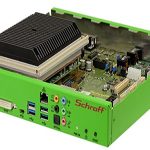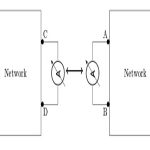The humidity sensor is also known as a hygrometer, that is used to measure humidity present in the air. Generally, both the humidity sensor & temperature sensor are used to detect humidity. Humidity is defined as the amount of moisture or water content present in the air. This water is present in gaseous form in the air. A less humid air indicates that the air is dry, which generally happens for dry areas. And high humidity means a lot of water is present in the air, which is the general … [Read more...]
What is an Accelerometer : Working & Its Applications
The accelerometer is known for measuring the rate of change of speed. So, measuring acceleration has been always one of the challenging aspects in the area of electronics and instrumentation. With the advent of microelectronics and microcontrollers, measuring the rate of change of speed has found new dimensions, blended with old fundamental principles. An accelerometer is widely used to measure the rate of change of speed in three-dimensional space. These devices essentially work on … [Read more...]
ATtiny85 Microcontroller & Its Working
In 1999, the ATMEL introduced ATtiny Microcontrollers. There are several 8-pin based ATtiny microcontrollers are available like ATtiny11, ATtiny12, ATtiny22, ATtiny26, ATtiny24, ATtiny44, ATtiny84, ATtiny25, ATtiny45, ATtiny202/204/402/804/404 & ATtiny85 microcontroller with microchip technology. These microcontrollers became popular as tiny AVR controllers. These are designed in small size with all the features of a microcontroller. They contain few Input-Output pins and limited program … [Read more...]
What is an Op Amp Integrator : Working & Its Applications
An operational amplifier is a voltage amplifier that has a differential input and a single-ended output. It is used with various external feedback components like capacitors and resistors. An operational amplifier is one such circuit that is capable of performing various calculus operations like integration and differentiation. It can be configured accordingly to perform such calculations. In the op amp integrator circuit, the output produced is nothing but the integration of the input voltage … [Read more...]
What is Damping Ratio : Formula & Its Significance
Damping of the oscillatory system is the effect of preventing or restraining or reducing its oscillations gradually with time. The damping ratio in physical systems is produced by the dissipation of stored energy in the oscillation. It is the restraining or decaying of vibratory motions like mechanical oscillations, noise, and alternating currents in electrical and electronic systems by dissipating energy. Examples of damping are; viscous drag in mechanical systems, resistance in electronic … [Read more...]
What is a Differential Amplifier : Design & Its Applications
The differential amplifier is a basic operational amplifier that consists of three basic terminals. Among those, two are of input that is inverting and the non-inverting terminals. Hence, these amplifiers are the circuits that can perform various operations mainly it is the difference between the two applied input signals. The most important factor gain is applicable here for both the applied input signals. Hence this concept of application leads to the elimination of the noise quantity from … [Read more...]
What is a Form Factor & Its Importance
Generally, form factors are related to different electronic devices like motherboards, cell phones, etc. For motherboard, it can be referred to as one kind of hardware peripherals & its structure. So motherboard form factors are micro-ATX & ATX. Similarly, for mobile phones, it is referred to as the complete shape, design of the phone like the traditional candy bar shape, which changes from the slide & flip form factors. At present, most of the phones are available with touch … [Read more...]
What is Reciprocity Theorem : Theory & Its Verification
In electronics and electrical engineering, many network theorems are used to solve complex and multi-loop circuits. The network theorem is used in the analysis of AC networks. They are classified into various types such as Thevenin's theorem, Superposition theorem, Norton's theorem, maximum power transfer theorem, Millman's theorem, Substitution theorem, and reciprocity theorem. This article describes the reciprocity theorem, which is used in both circuit theory and field theory. Since the … [Read more...]
What is an Ultrasonic Transducer : Working & Its Applications
The number of waves or signals that occur in a fixed time interval specifies the frequency and it is measured in the units of Hertz (Hz). Based on the values of frequency, the frequency range is varied and it is determined. When the sound produced is at a higher level than the human hearing range, then it is said to be ultrasound, with a frequency spectrum of over 20KHz. The device that can generate or sense the ultrasound is called an ultrasonic transducer and ultrasonic sensor. The various … [Read more...]
What is PMMC Instrument : Construction & Its Working
The various electrical machines and panels are fixed onboard to sail the ship from one place to another place very efficiently and safely. To avoid the breakdown during sailing, these machines require regular maintenance. That means, measuring electrical quantities like resistance, voltage, and current will help to analyze the proper condition of the electrical machine. For this measurement, different instruments are used like a PMMC instrument. PMMC instruments are one of the simple and … [Read more...]
- « Previous Page
- 1
- …
- 8
- 9
- 10
- 11
- 12
- …
- 25
- Next Page »









